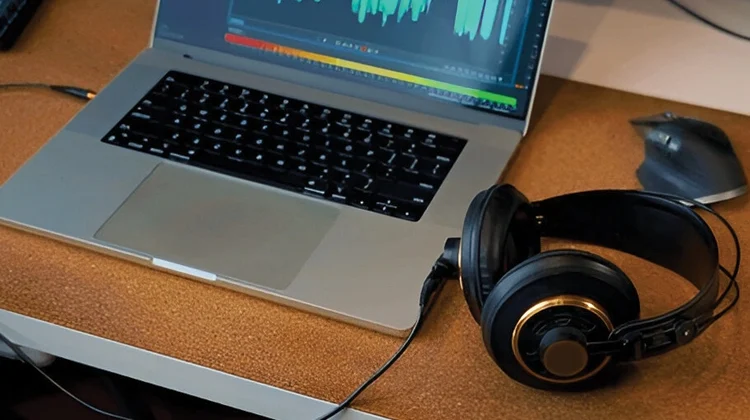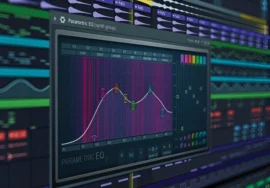
Your Digital Sound Studio
In today’s digital age, where content reigns supreme, audio plays a pivotal role in capturing attention, conveying emotions, and enhancing the overall user experience. Whether you’re a podcaster, musician, or someone looking to edit audio files, online audio editors have emerged as indispensable tools. These web-based applications offer a plethora of features, allowing you to manipulate, enhance, and create audio content with ease.
What are Online Audio Editors?
Online audio editors are web applications that give a platform for editing audio files in your web browser. Unlike traditional audio editing software that requires installation, these tools are accessible from anywhere with an internet connection. They offer a wide range of functionalities, from basic trimming and cutting to advanced effects and mixing.
Key Features of Online Audio Editors
- Basic Editing:
- Trimming: Cut out unwanted sections of your audio.
- Cutting: Split audio files into multiple segments.
- Joining: Combine multiple audio files into a single track.
- Fading: increase or decrease the volume at the beginning or end of a track.
- Effects:
- Equalization: Adjust the frequency balance of your audio.
- Compression: Reduce the dynamic range for a more consistent volume.
- Reverb: Add a sense of space and depth to your audio.
- Delay: Create echoes and rhythmic effects.
- Noise Reduction: Remove unwanted background noise.
- Mixing:
- Multiple Tracks: Work with multiple audio tracks.
- Panning: Adjust the balance between the left and right channels.
- Volume Control: Control the volume of individual tracks.
- Automation: Create gradual changes in volume, panning, or effects.
- Exporting:
- Various Formats: Export your edited audio into popular formats like MP3, WAV, AAC, and more.
- Customization: Adjust bitrate, sample rate, and other settings.
Benefits of Using Online Audio Editors
- Accessibility: No need for installation, making them accessible on any device with an internet connection.
- Ease of Use: Many online audio editors offer intuitive interfaces, making them easy to learn and use.
- Cost-Effective: Many online audio editors are free or offer affordable subscription plans, making them a budget-friendly choice.
- Cloud Storage: the tools offer cloud storage integration, allowing you to save and access your projects from anywhere.
- Collaboration: the platforms enable collaboration, making it easier to work on projects with others.
Popular Online Audio Editors
- Audacity: A free and open-source audio editor with a wide range of features and a dedicated community.
- SoundCloud: known as a social audio platform, SoundCloud also offers a built-in audio editor for basic editing tasks.
- Twisted Wave: A browser-based audio editor that offers clean work with a variety of editing tools.
- Online Audio Editor: A simple online tool for basic editing tasks.
- VEED: A versatile online video and audio editor that offers a range of features, including audio editing.
Choosing the Right Online Audio Editor
When selecting an online audio editor, consider the following factors:
- Features: find the specific features you need for your projects.
- Ease of Use: Look for a job that is intuitive and easy to navigate.
- Cost: decide your budget and choose a tool that fits within your price range.
- Collaboration: If you need to work with others, consider tools that offer collaboration features.
- Integration: Check if the tool integrates with other software or services you use.
Tips for Effective Audio Editing
- Listen Carefully: Pay close attention to the audio quality and identify areas that need improvement.
- Start Simple: Begin with basic editing tasks and gradually explore more advanced features as you gain confidence.
- Experiment: Don’t be afraid to experiment with different effects and settings to achieve the desired sound.
- Save Regularly: Create regular backups of your work to avoid losing progress.
- Learn from Others: Watch tutorials and seek advice from experienced audio editors to improve your skills.
Advanced Techniques and Tips
In the previous section, we explored the basics of online audio editors and their key features. Now, let’s delve into some advanced techniques and tips to help you create even more impressive audio content.
1. Mastering Audio
Mastering is the final stage of audio production, where you polish your audio to achieve a professional sound. Here are some essential mastering techniques:
- Normalization: Adjust the overall volume level to ensure consistency throughout your audio.
- Limiting: Prevent audio from clipping (distorting) by limiting the maximum volume.
- EQ: Fine-tune the frequency balance to enhance clarity and fullness.
- Compression: Reduce dynamic range to create a more even sound.
- Stereo Imaging: Adjust the width and depth of the stereo field to create a more immersive listening experience.
2. Audio Restoration
If you’re working with old or damaged audio, audio restoration techniques can help improve its quality. Here are some common techniques:
- Noise Reduction: Remove unwanted background noise, such as hisses or hum.
- Click and Pop Removal: Eliminate sudden, sharp sounds that can occur in older recordings.
- De-clipping: Repair audio that has been clipped or distorted.
- Pitch Correction: Adjust the pitch of individual notes or vocals.
3. Audio Effects
Online audio editors offer a wide range of effects to enhance your audio. Here are some popular effects to experiment with:
- Distortion: Create a gritty or distorted sound for rock, metal, or electronic music.
- Chorus: Add thickness and depth to vocals or instruments.
- Flanger: Create a swirling, jet-like effect.
- Phaser: Create a comb-filter effect that sweeps across the frequency spectrum.
- Tremolo: Create a pulsating or vibrato effect.
4. Audio Automation
Automation allows you to create gradual changes in volume, panning, or effects over time. This can be used to add interest and dynamics to your audio.
5. Collaboration and Sharing
Many online audio editors offer features that enable collaboration and sharing. This can be helpful if you’re working on a project with others or want to share your creations with the world.
6. Tips for Effective Audio Editing
- Listen Critically: Pay close attention to the details of your audio and identify areas that need improvement.
- Experiment: Don’t be afraid to try different effects and techniques to achieve the desired sound.
- Take Breaks: Listening to audio for extended periods can fatigue your ears. Take regular breaks to maintain your listening acuity.
- Learn from Others: Watch tutorials, listen to podcasts, and join online communities to learn from experienced audio editors.
Conclusion
Online audio editors offer a powerful set of tools for creating and editing audio content. By mastering advanced techniques and experimenting with different effects, you can produce high-quality audio that captivates your audience. Whether you’re a professional musician, podcaster, or simply someone looking to enhance your audio projects, online audio editors are an invaluable asset.





